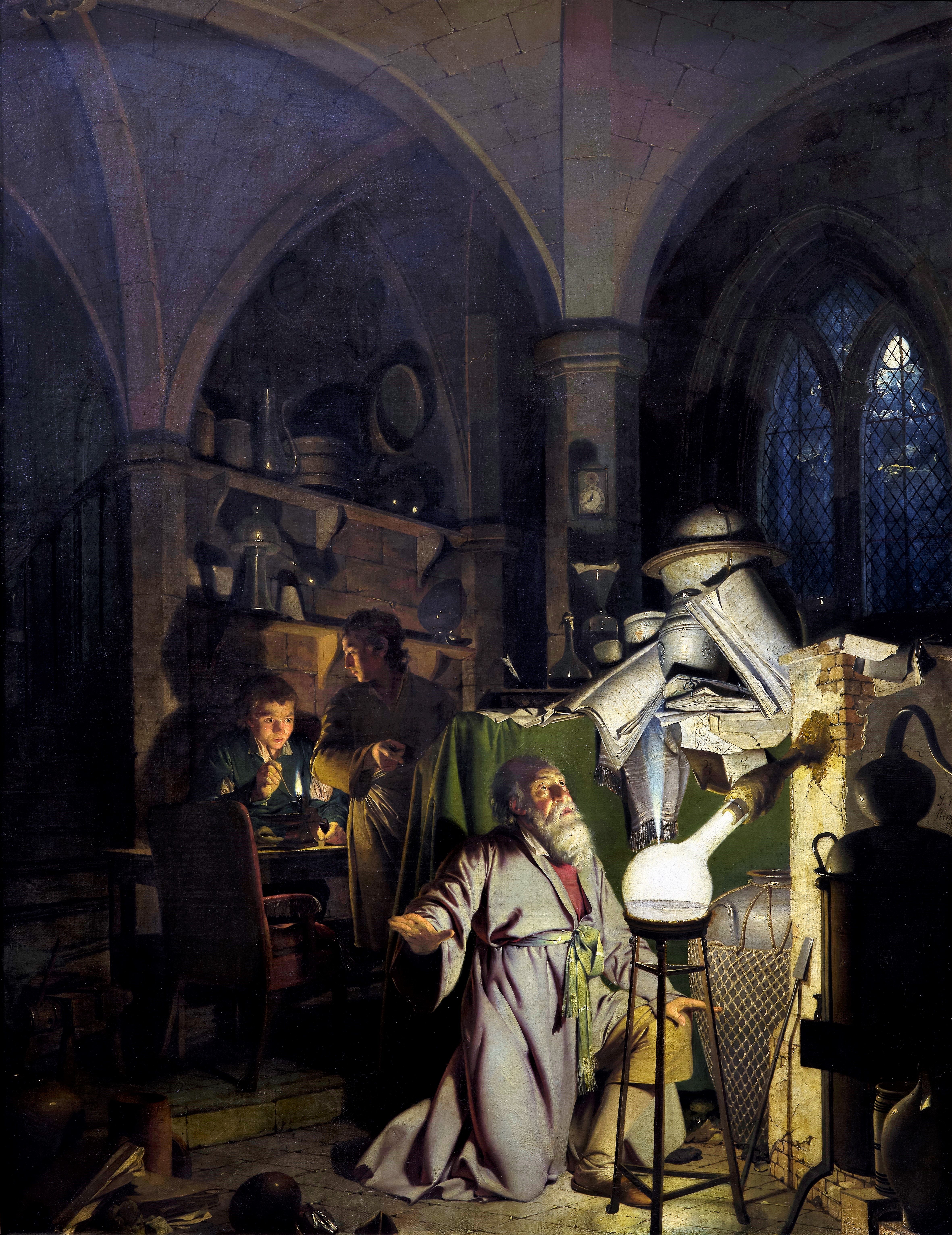The wizard of phosphorus: One man’s quest to turn sewage into eco-gold

Credit: aubi1309 / Adobe Stock
- Phosphorus in fertilizer is crucial to feeding the world but too much of the element in the environment is disastrous.
- A revolution in capturing phosphorus from wastewater is underway.
- Phosphorus recovery will improve water quality and create a more sustainable food system.
All the H2O we have on Earth now is all we will ever have. Water molecules might get polluted with contaminants for a time, or they might get locked up in glaciers for eons, or whole regions may suffer decades of drought, but Earth’s overall water balance never fluctuates. So we’re never going to run out of water. That doesn’t mean we don’t have to worry about supply, both undersupply due to pollution, drought, and water diversion projects or oversupply because of climate change. For example, if all the glaciers were to melt over the course of just a few decades, ocean levels could rise some 230 feet, drowning virtually every coastal city (and many others) on the globe.
The phosphorus cycle functions similarly — the phosphorus atoms the Earth has now are essentially all it will ever have. For billions of years, they leached into the living world as their host rocks eroded, like drops of water off a melting glacier. Now that we have figured out how to turn those drips into a gusher by mining the sedimentary rocks created by dead sea life raining down upon the ocean floor, we are flooding the world with it — in some cases to disastrous effect. Like water, we can’t live without phosphorus but, like water, too much of it causes its own set of drastic problems.
“We’ve taken millions and millions of years of phosphorus that had accumulated in these (sedimentary rock) deposits and released it into the world in the last fifty years . . . and the impacts of that are not over,” says James Elser, University of Montana ecologist and the director of Arizona State University’s Sustainable Phosphorus Alliance. “Phosphate is a biological accelerant, that’s what I call it. It’s like spraying gasoline on a forest fire. It just makes life go crazy.”
To slow the torrent we’ve unleashed will require a change in our relationship with the element beyond becoming more efficient in how we mine, process, and apply chemical fertilizer. It means shedding our ingrained notion that human and animal excreta is waste, because it is anything but that.
Technologies already exist to refine the nutrients in human waste all the way down to their elemental form. A wastewater treatment plant in Chicago, for example, installed a nutrient recovery system several years back that was expected to cut the phosphorus load in its water discharges by about 30 percent. It turns that captured phosphorus into commercial-grade fertilizer pellets — a modest but valuable cache of crop nutrients that would otherwise be flowing toward — and feeding — the dead zone that plagues the Gulf of Mexico.
Some conservationists say Chicago’s new system and others like it are a great step, but a true revolution is needed to capture virtually all the phosphorus flowing into wastewater treatment plants around the world and convert it back into plant food as safe and contaminant-free as anything produced by a modern fertilizer factory. That revolution is already happening — in phosphorus’s hometown, Hamburg.
Barely two miles from the neighborhood where alchemist Hennig Brandt conjured the first nuggets of elemental phosphorus from a vat of human urine in 1669, a modern-day wizard is again attempting to sift riches from the human waste stream.

Brandt’s forays into the mysteries of the natural world were fueled by a lust for gold and navigated by superstition. Martin Lebek works the same waters with a rational mind honed by years of technical studies at Germany’s University of Hanover, where he received his doctorate in civil engineering — with a focus on biological wastewater treatment.
I met Lebek in late 2019 at the Hamburg treatment plant that serves more than two million toilet flushers in northern Germany. It is a model of industrial elegance that adds two windmills towering some six hundred feet above the plant’s wastewater pools to the Hamburg skyline. Those spinning blades, along with ten onion-shaped, one-hundred-foot-tall waste digester tanks that help convert the methane released from the plant’s sewage sludge into energy, together produce enough electricity to power the treatment plant.
Lebek has richer ambitions for Hamburg’s sewage. Once that sewage sludge has been stripped of its methane, it previously met one of two fates. Some was burned and trucked to landfills, and some was spread on agriculture lands to capitalize on its residual phosphorus and other nutrients. The sludge is not technically human waste but the substance produced after carefully cultured bacteria devour the pathogen-rich wastes flowing into the plant.
The treated water that is discharged in the pipes flowing out of treatment plants contain some phosphorus but, by far, most of the phosphorus flowing into a treatment plant ends up in that sludge, also called biosolids.
Enhancing croplands with biosolids is a common practice in Europe as well as the United States. In my hometown of Milwaukee, for example, biosolids are heat-dried into pellets and bagged as a lawn and garden product called Milorganite.
Yet even human waste turned into largely lifeless sludge can still be contaminated with pathogens and other bad stuff — pesticides, pharmaceuticals, heavy metals, and industrial concoctions like those increasingly worrisome “forever chemicals” used in products like nonstick cookware, also known as PFAS. These pollutants may work their way into crops fertilized with biosolids, and thus onto dinner plates and into our bloodstreams. This is why less and less farmland in Europe is fertilized by biosolids. Switzerland has altogether banned the practice, and in Germany today only about a quarter of the biosolids produced by treatment plants make their way back to farm fields. Bigger changes are coming.
A true revolution is needed to capture virtually all the phosphorus flowing into wastewater treatment plants around the world and convert it back into plant food.
Germany will require its largest wastewater treatment plants to strip out basically all the phosphorus contained in its sludge beginning in 2029. The measure passed even while there were questions about whether the technology to accomplish this in a cost-effective way and on an industrial scale could be developed. The private company Lebek works for, Remondis, a family-owned, recycling-focused firm with more than thirty thousand employees, is one among many now in the race to develop such technology.
Remondis started in 2014 with an experimental, small-scale system at the Hamburg wastewater plant that extracted phosphorus atoms from the biosolids after they had been turned into ash. Lebek declined to disclose precisely how his process works because there are a host of other companies competing in the phosphorus recycling rush triggered by the German sewage sludge law. But the essence of the technology is to treat the ash with a precisely measured dose of phosphoric acid in a fashion that releases from that ash more phosphoric acid.
Unlike the super-potent sulfuric acid used to dissolve phosphorus in sedimentary rocks at modern fertilizer factories, Lebek explained phosphoric acid is too weak to release the heavy metals and other contaminants in sewage sludge ash. But it is strong enough to let loose the ashes’ own phosphoric acid, which is a raw material that can be used to make chemical fertilizer, as well as nutritional supplements in animal feed. Phosphoric acid is also used in human foods, though Lebek said his company has no plans to put its sewage-derived product, pure as it is, into products directly consumed by humans.
The pilot plant process worked so well that by 2019 Hitachi earth movers were roaring in a corner of the Hamburg sewage treatment plant and had already dug the foundation for a full-scale phosphorus recovery facility.
In early 2022, Remondis and its partner in the project, the publicly owned Hamburg water utility, opened the plant and began producing factory-grade fertilizer from the sludge. Lebek anticipated that the plant would be fully operational by the end of the year. He is confident that this recycling technology, applied nationally, could dramatically reduce Germany’s reliance on phosphorus imports. This is critical because Europe has no significant phosphorus rock reserves of its own and is therefore just as dependent on foreign fertilizer as the bone- and bird poop-crazy British were in the 1800s. “We’re not only recycling phosphorus here to recover a resource,” Lebek told me, “but to get independent, mainly from the importing of phosphorus.”
And if Remondis or any of its rivals’ phosphorus recovery technologies are successfully deployed across Europe, Lebek said it will do more than reduce the continent’s dependence on other nations for its food supply. It will also lead to improved water quality, and it should also make some people wealthy along the way.
“We are not crazy to believe that we can make billions of [dollars] here, but this is the first,” Lebek said. “And this will be the start of a hopefully longer story.”
Lebek knows the story started when phosphorus’ elemental powers were unleashed just across the Elbe River more than three centuries ago. Now, less than a century after the city was burned to the ground by Allied bombers dropping phosphorus from the heavens, Hamburg is coaxing from its own ashes a more sustainable food system, and future.
“It is,” Lebek said of the phosphorus recovery plant rising along the west bank of the Elbe River, “phosphorus coming home.”





